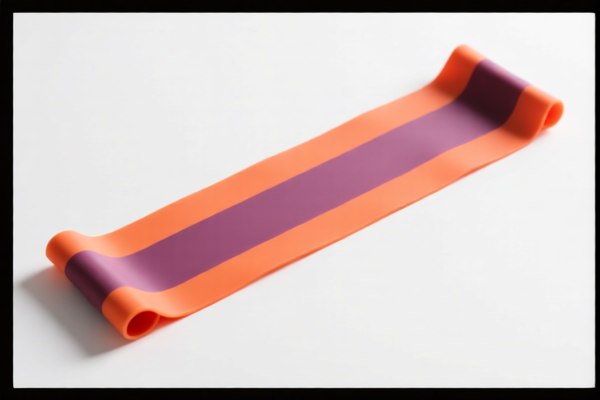| HS Code | Official Doc | Tariff Rate | Origin | Destination | Effective Date |
|---|---|---|---|---|---|
| 9506910030 | Doc | 42.1% | CN | US | 2025-05-12 |
| 9506910030 | Doc | 42.1% | CN | US | 2025-05-12 |
| 9506910030 | Doc | 42.1% | CN | US | 2025-05-12 |
| 9506910030 | Doc | 42.1% | CN | US | 2025-05-12 |
| 9506991200 | Doc | 35.6% | CN | US | 2025-05-12 |




Resistance Band
A resistance band is a flexible loop of elastic material used for strength training, physical therapy, and general fitness. They provide varying levels of resistance when stretched, enabling a wide range of exercises targeting different muscle groups.
Material
Resistance bands are commonly made from:
- Latex: Offers high elasticity and strong resistance. However, latex allergies are a concern for some users.
- Thermoplastic Elastomer (TPE): A synthetic rubber alternative to latex, suitable for individuals with latex sensitivities. Generally less durable than latex.
- Fabric: Often a blend of polyester and spandex, these bands are typically wider and offer more comfort, frequently used in hip and glute training (booty bands). They are less likely to roll or pinch skin.
Purpose and Function
The primary purpose of resistance bands is to provide progressive resistance during exercise. They function by:
- Variable Resistance: The resistance increases as the band is stretched, providing a challenging workout throughout the full range of motion.
- Muscle Strengthening: Bands engage muscles isometrically (holding a position) and dynamically (moving through a range of motion).
- Rehabilitation: Used extensively in physical therapy to restore strength and mobility after injury or surgery.
- Flexibility & Mobility: Can be used for stretching exercises to improve range of motion and flexibility.
Usage Scenarios
Resistance bands are versatile and can be used in numerous settings:
- Home Workouts: A convenient and affordable alternative to gym equipment.
- Gym Training: Used as supplementary exercises or as part of a larger workout routine.
- Physical Therapy Clinics: Essential for rehabilitation programs.
- Travel: Lightweight and portable, making them ideal for maintaining fitness while traveling.
- Sports Training: Used for warm-up exercises, activation of specific muscle groups, and injury prevention.
Common Types
Resistance bands are categorized by resistance level and format:
- Loop Bands (Mini Bands): Small, circular bands used primarily for lower body exercises (glutes, hips, legs).
- TheraBands (Flat Bands): Long, flat bands often used for rehabilitation exercises and upper body training. Available in various resistance levels, color-coded for easy identification.
- Figure 8 Bands: Shaped like a figure eight, providing resistance in multiple directions. Useful for shoulder and arm exercises.
- Tube Bands with Handles: Long tubes with handles at both ends, offering a comfortable grip for a wider range of exercises. Often include door anchors for increased versatility.
- Resistance Bands with Door Anchor: Include a door anchor allowing the band to be secured to a doorframe, creating a fixed point for exercises.
Resistance bands are articles and equipment for general physical exercise, and can be made of plastics. Here are relevant HS codes based on the provided reference material:
- 9506400000: This HS code covers articles and equipment for table-tennis, and parts and accessories thereof. While resistance bands aren't specifically table-tennis equipment, this chapter broadly includes sports equipment. The basic tariff is 5.1%, with no additional tariff currently, but a 30.0% additional tariff will apply after April 2, 2025, resulting in a total tariff of 35.1%.
- 9506910030: This HS code covers articles and equipment for general physical exercise, gymnastics, athletics, or outdoor games (including table-tennis). This is a more direct fit for resistance bands. The basic tariff is 4.6%, with an additional tariff of 7.5%, and a 30.0% additional tariff after April 2, 2025. Steel or aluminum products have an additional 25% tariff. The total tariff is 42.1%.
- 3926909905: This HS code covers other articles of plastics, specifically elastic bands made wholly of plastics. The basic tariff is 5.3%, with an additional tariff of 7.5%, and a 30.0% additional tariff after April 2, 2025, resulting in a total tariff of 42.8%.
Important Considerations:
- Material Verification: For HS code 3926909905, it is crucial to verify that the resistance bands are "wholly of plastics" as this is a key determinant for correct classification.
- Post-April 2, 2025 Tariffs: Be aware that the additional tariffs for several HS codes will increase to 30.0% after April 2, 2025.
- Steel/Aluminum Content: If the resistance band contains steel or aluminum, HS code 9506910030 will apply, and an additional 25% tariff will be levied on top of the standard and additional tariffs.
Customer Reviews
No reviews yet.